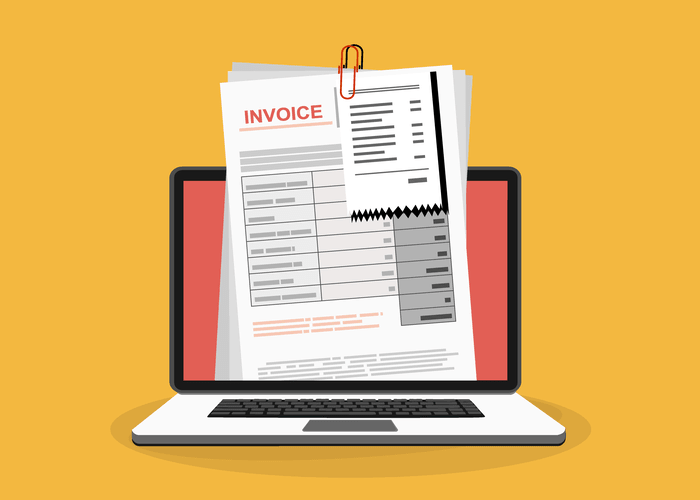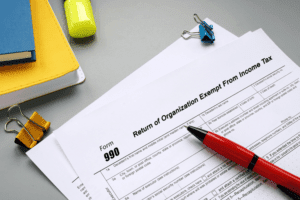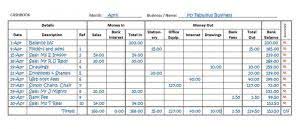
In other words, the balance in Accounts Receivable is the amount of the open or uncollected sales invoices. If a company undergoes liquidation, it will repay the retained earnings balance to shareholders. However, other factors impact how much unearned revenue of this balance shareholders will receive. Similarly, assets in accounting are resources owned or controlled by a company.
Long-Term Debt
Businesses can choose to accumulate earnings for use in the business or pay a portion of earnings as a dividend. Retained earnings allow businesses to fund expensive asset purchases, add a product line, or buy a competitor. Your firm’s strategy should influence how you choose to use retained earnings and cash dividend payments. For instance, if your business has $20,000 left over after covering all its financial responsibilities—including operating expenses like employee salaries—you would report that money as retained earnings. The share capital represents contributions from stockholders gathered through the issuance of shares. It is divided into two separate accounts common stock and preferred stock.
- Overall, retained earnings play a crucial role in a company’s financial strategy, influencing decisions on dividends, investments, and overall financial health.
- In order to issue a company’s financial statements on a timely basis, it may require using an estimated amount for the accrued expenses.
- The goal is to maintain a balance that supports your business’s health and strategic goals while meeting shareholder expectations.
- However, it also subtracts dividends paid to shareholders in the past first.
- Useful life is used in computing depreciation on an asset, instead of using the physical life.
- Businesses that generate retained earnings over time are more valuable and have greater financial flexibility.
The Formula
The balance sheet also provides information on a corporation’s ability to obtain long-term loans. A high level of financial leverage may be viewed by lenders as a high level of risk. The current asset other receivables is the amount other than accounts receivable that a company has a right to receive. Over time, as companies accumulate profits they must record them on the balance sheet as a balance. Retained earnings are the portion of income that a business keeps for internal operations rather than paying out to shareholders as dividends. Retained earnings are directly impacted by the same items that impact net income.
- To find retained earnings, you’ll need to use a formula to calculate the balance in the retained earnings account at the end of an accounting period.
- The comparative balance sheet presents multiple columns of amounts, and as a result, the heading will be Balance Sheets.
- Since no interest is payable on December 31, 2023, this balance sheet will not report a liability for interest on this loan.
- However, for accounting purposes the economic entity assumption results in the sole proprietorship’s business transactions being accounted for separately from the owner’s personal transactions.
- The final liability appearing on a company’s balance sheet is commitments and contingencies along with a reference to the notes to the financial statements.
Professional Development: Accounting Courses and Certifications
The formula to calculate retained earnings encompasses those elements. Due to its definition, some people may confuse retained earnings for current liabilities or assets. However, retained earnings are an equity balance on the balance sheet. Essentially, retained earnings are balances accumulated due to profits or losses. They do not represent assets or cash balances that companies have kept.
Alternatively, the company paying large dividends that exceed the other figures can also lead to the retained earnings going negative. A separate line within stockholders’ equity that reports the corporation’s cumulative income that has not been reported as part of net income on the corporation’s income statement. The items that would be included in this line involve the income or loss involving foreign currency transactions, hedges, and pension liabilities. The systematic allocation of the cost of an asset from the balance sheet to Depreciation Expense on the income statement over Food Truck Accounting the useful life of the asset. (The depreciation journal entry includes a debit to Depreciation Expense and a credit to Accumulated Depreciation, a contra asset account).
- The $1 million difference is recorded as the intangible asset goodwill.
- To simplify your retained earnings calculation, opt for user-friendly accounting software with comprehensive reporting capabilities.
- Retained earnings are reclassified as one or more types of paid-in capital under two general circumstances.
- Cost of Goods Sold is a general ledger account under the perpetual inventory system.
- In contrast, when a company suffers a net loss or pays dividends, the retained earnings account is debited, reducing the balance.
- Finally, if we assume that the company will not default over the next year, then debt due sooner shouldn’t be a concern.
Are Retained Earnings Considered a Type of Equity?

A company’s shareholder equity is calculated by subtracting total liabilities from its total assets. Shareholder equity represents the amount left over for shareholders if a company pays off all of its liabilities. To see how retained earnings impact shareholders’ equity, let’s look at an example. Retained earnings are reported under the shareholder equity section of the balance sheet while the statement of retained earnings outlines the changes in RE during the period. You can retain earnings, pay a cash dividend to shareholders, or choose a hybrid solution that addresses both of those.
- On the other hand, it could be indicative of a company that should consider paying more dividends to its shareholders.
- The second reason debt is less expensive as a funding source stems from the fact interest payments are tax-deductible, thus reducing the net cost of borrowing.
- For example, a strong retained earnings track record can attract investment capital or potential buyers if you intend to sell your business.
- The additional column allows the reader to see how the most recent amounts have changed from an earlier date.
Any bond interest that has accrued but has not been paid as of the balance sheet date is reported as the current liability other accrued liabilities. In order to issue a company’s financial statements on a timely basis, it may require using an estimated amount for the accrued expenses. The long-term asset construction in progress accumulates a company’s costs of constructing new buildings, additions, equipment, etc.

The D/E Ratio for Personal Finances

This usually gives companies more options to fund expansions and other initiatives without relying on high-interest loans or other debt. The retained earnings are calculated by adding net income to (or subtracting net losses from) the previous term’s retained earnings and then subtracting any net dividend(s) paid to the shareholders. One way to assess how successful a company is in using retained money is is retained earnings a long term liabilities to look at a key factor called retained earnings to market value. It is calculated over a period of time (usually a couple of years) and assesses the change in stock price against the net earnings retained by the company. For this reason, retained earnings decrease when a company either loses money or pays dividends and increase when new profits are created.

Accordingly, the normal balance isn’t an accurate measure of a company’s overall financial health. The retained earnings equation is a fundamental accounting concept that helps companies calculate the amount of profit that is kept in the business after dividends are distributed to shareholders. The retained earnings calculation is essential for understanding a company’s ability to reinvest in itself, pay off debt, or fund its own growth without needing additional outside funding. To determine total assets for this equity formula, you need to add long-term assets as well as the current assets.
Deixe um comentário